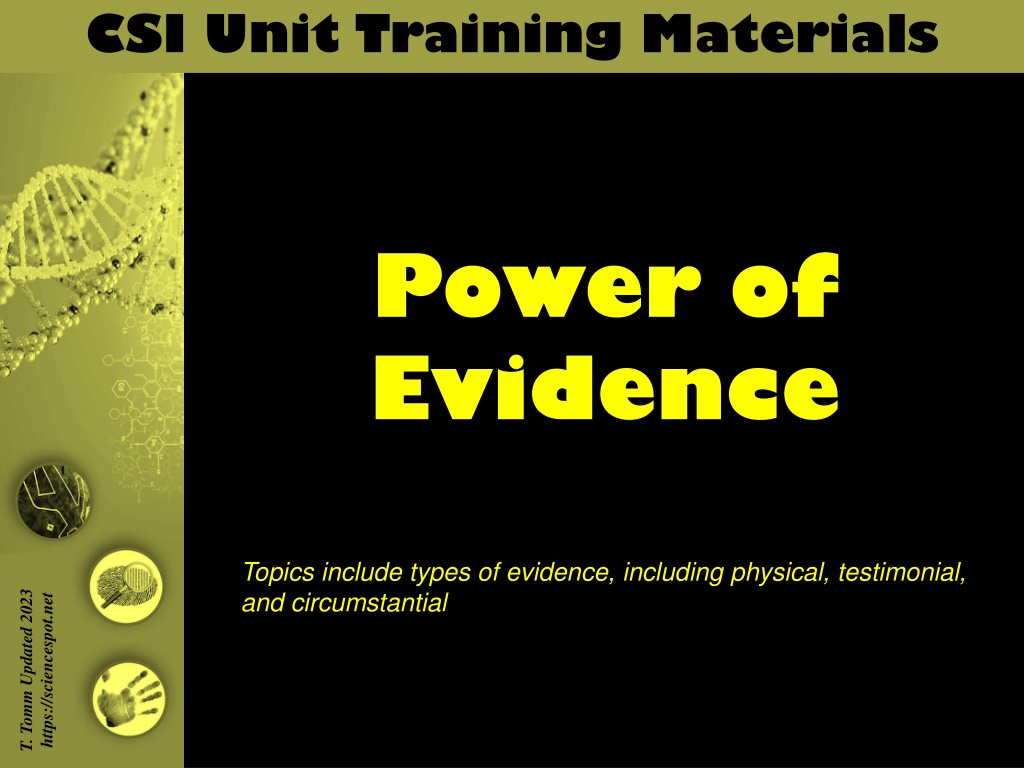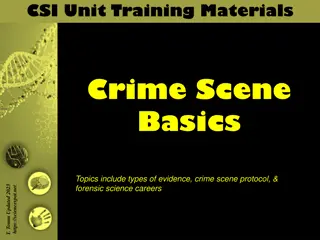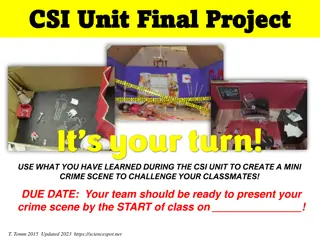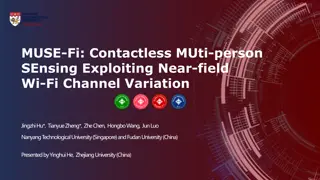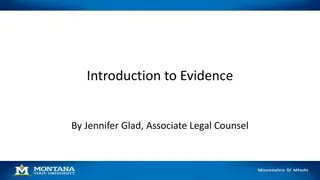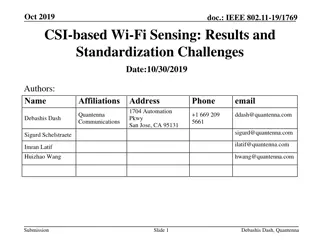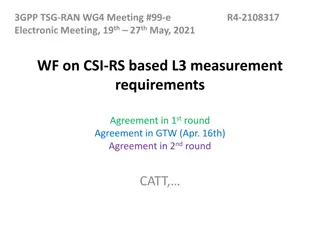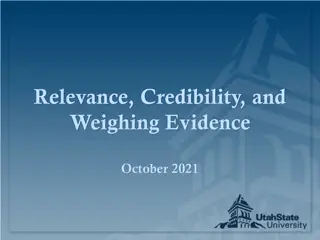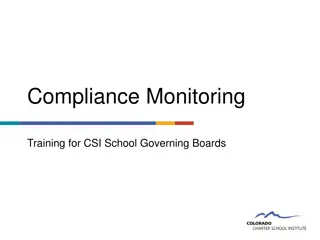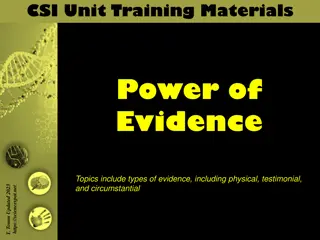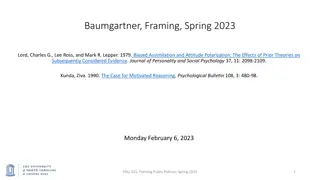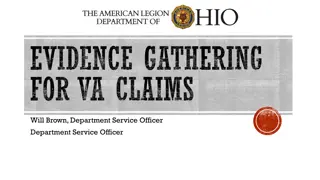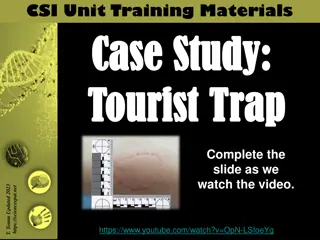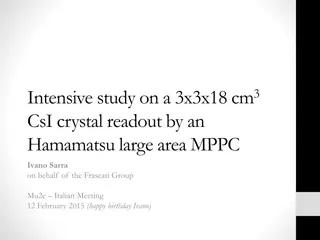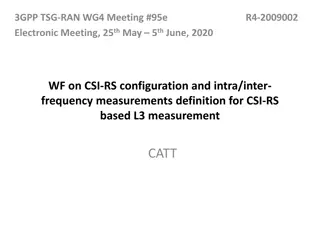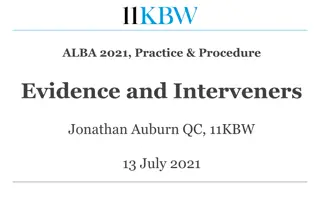Understanding the Power of Evidence in CSI Unit Training
Explore the various types of evidence, including physical, testimonial, and circumstantial, in CSI unit training materials. Learn about factors influencing eyewitness accounts of a crime and test your skills with an eyewitness challenge. Discover how facial composites are created to assist in identifying suspects and missing persons. Dive into the world of forensic evidence with updated insights for 2023.
Download Presentation

Please find below an Image/Link to download the presentation.
The content on the website is provided AS IS for your information and personal use only. It may not be sold, licensed, or shared on other websites without obtaining consent from the author. Download presentation by click this link. If you encounter any issues during the download, it is possible that the publisher has removed the file from their server.
E N D
Presentation Transcript
CSI Unit Training Materials Power of Evidence Topics include types of evidence, including physical, testimonial, and circumstantial T. Tomm Updated 2023 https://sciencespot.net
Part A: Types of Evidence 1. Testimonial evidence includes oral or written statements given to police as well as testimony in court by people who witnessed an event. 2. What factors could affect an eyewitness account of a crime? Why? Power of Evidence Age - Young vs. old? True or false? Eyewitness testimony is one of the most reliable types of evidence. Impair memory, limited details Influenced by others or media Drugs/Alcohol Other People Nonviolent vs. violent Type of Crime Length of Crime How long were they able to view the suspect or a scene? Scars, piercings, tattoos, attractive/unattractive Suspect s Appearance Time of Day Enough light to see scene or suspect? Familiarity Know the suspects, victims, or the scene
Eyewitness Challenge Let s test your eyewitness skills! You will have 1 minute to study the photograph of a crime scene on the next slide. Try to pay attention to details as you will be asked 10 questions about the crime scene! You are not allowed to write anything down until after the time is up. Ready?
Answer the questions on the following slide SILENTLY. Type your answers in the blanks to the right of your slide.
Answer each question below. NO TALKING! 1. What color coffee mug was in the picture? Blue Red Yellow 2. When was the deadline? Yesterday Today Tomorrow 3. What time was on the clock on the wall? 10:40 11:05 1:55 4. How many sticky notes were on the whiteboard? 4 6 8 5. Which of these was NOT in the picture? Stapler Trash Can Printer 6. What was the name on the plaque on the desk? Bill Brian Conner 7. What color was the victim's shirt? Black Blue Red 8. How many plants were in the picture? None One Two 9. The marker in the drawer was: Red Blue Green 10. The book was: On a box In the trash can Under the desk
Facial Composites 3. Investigators use software to work with eyewitnesses to create facial composites for people involved in a crime or a missing person s case. Power of Evidence The composite may be shared internally to assist officers in identifying the suspect. They may also be shared externally through local media (radio, TV, and newspaper) to solicit leads from citizens.
FACES Challenge: You will have a chance to try to create a facial composite. You will need to pay close attention to the following features: The shape of the face The shape of the jaw The shape of the eyes The shape of the nose The width of the neck The shape & protrusion of the ears The presence of facial piercing The presence of facial hair, its color, & location The presence of facial markings, such as scars or tattoos Forehead or other facial lines The presence of eyeglasses or sunglasses The length, color, & texture of the person s hair Let's give it a try!
Art of Crime Detection Use the arrows to move up and down the list. Click S to submit your composite and find out if you are correct (or close enough).
4. Circumstantial evidence refers to indirect evidence that tends to establish a conclusion by inference (not a direct link) Examples: The search history of a person suspected of poisoning someone may show he/she was looking for information, but it does not mean that person is the one who did the crime. Two people may work at the same location, but does not mean that one harmed the other one. A person s fingerprints, vehicle, or footprint may be found at a crime scene, but it does prove they did the crime. A store employee (who never stayed late) starts staying later to help close a store, which coincides with missing cash or valuables. An eyewitness reports hearing a story at a local caf that relates to a recent crime. The conversation does not prove a crime, but can help make connections between suspects. Power of Evidence Go to https://helpfulprofessor.com/circumstantial-evidence-examples/ for more details.
5. Physical evidence refers to any material items that would be present at the crime scene, on the victims, or found in a suspect s possession. It includes all materials that can be tested, examined, and used for comparison. Power of Evidence 6. Fill in the blanks to describe each type of physical evidence. Chemistry Evidence from fires, explosions, paints, and glass as well as controlled & illegal substances Microscopy Microscopic (or trace) evidence, such as hairs, fibers, woods, soils, building materials, insulation and other materials. Biology/DNA Analysis of body fluids and dried stains such as blood, semen, and saliva; DNA analysis may help to identify persons involved in a crime. Toxicology Body fluids and tissues to determine the presence of drugs and poisons.
Latent Prints - Identification and comparison of fingerprints or other hidden impressions from sources like feet, shoes, ears, lips or the tread on vehicle tires. Ballistics (Firearms) Study of bullets and ammunition through the comparison of fired bullets, cartridges, guns, and gunpowder patterns on people and objects. Toolmarks Examines marks left by tools on objects at a crime scene or on a victim, such as a hammer used to break a door or a screwdriver used to pick a lock. Power of Evidence
6. Identify each type of evidence as testimonial (T), physical (P), or circumstantial (C). Some may have more than once answer. T P C T T ______ Suspect s statement of what happened during the crime _____ Blood droplets found on a weapon _____ The suspect and victim worked at the same company _____ A person s accounts of an accident between a car & truck _____ Victim s written report of an attack or crime _____ A video segment from a surveillance camera where the crime occurred. _____ Hairs & fibers found on a victim s coat matched to a suspect. _____ A rock from the suspect s house is the same type of rock found at the crime scene. _____ A person reports he saw the suspect s car in the same area as the crime. _____ Tire tracks at the crime scene were from a pickup truck. P&C Power of Evidence P P&C C T&C
